
Tietze syndrome What it is, causes, diagnosis, and treatment
Onset of pain may be gradual or sudden and may spread to affect the arms and/or shoulders. Tietze syndrome is considered a benign syndrome and, in some cases, may resolve itself without treatment. The exact cause is not known. Tietze syndrome was first described in the medical literature in 1921 by Alexander Tietze, a German surgeon.
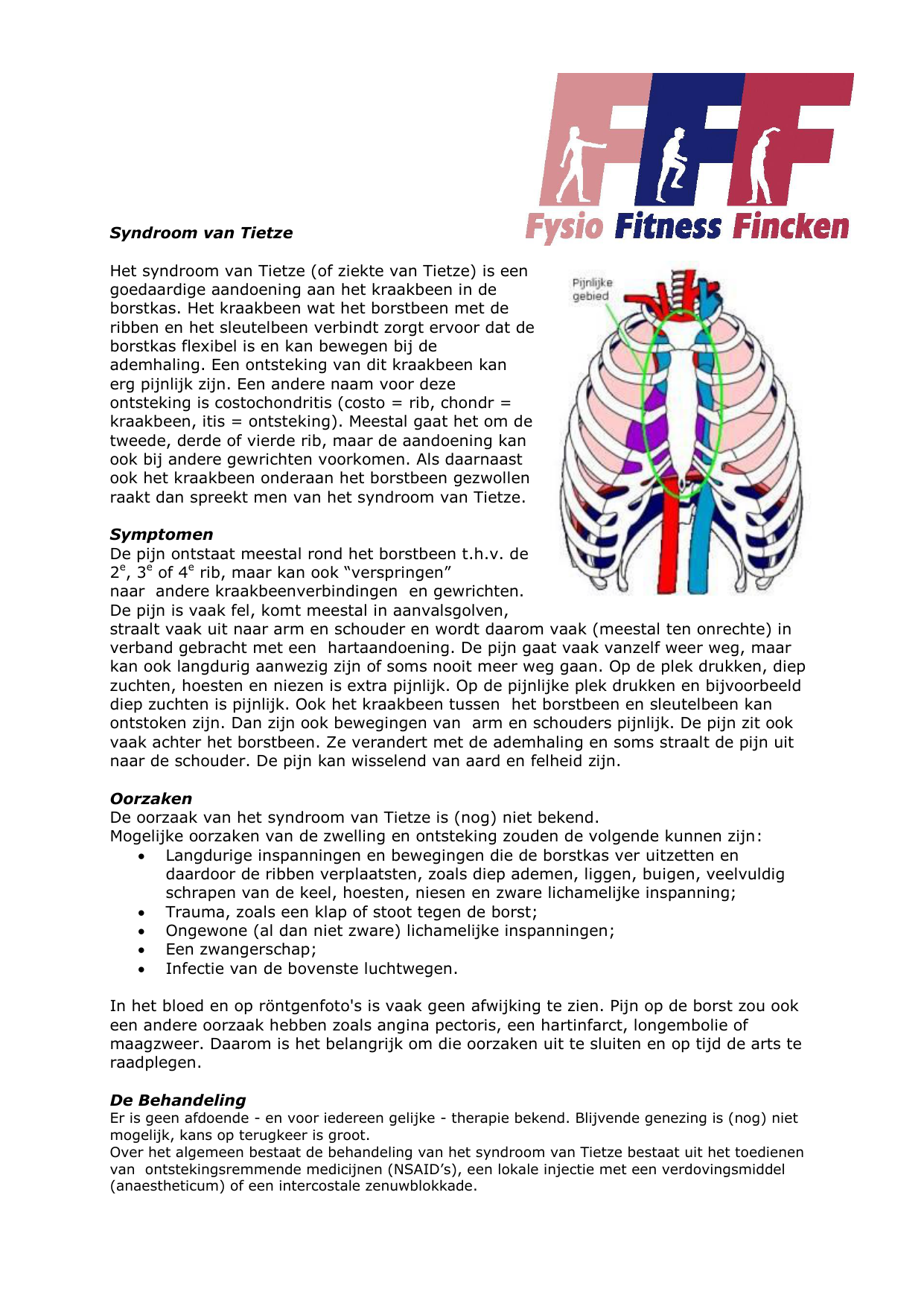
Syndroom van Tietze Het syndroom van Tietze (of ziekte van Tietze
Less common symptoms of Tietze syndrome include the following: Pain on both sides of the chest. Pain in the ribs other than between ribs two and three. Swelling in the chest, shoulders, or arms. Redness or warmth in the chest, shoulders, or arms. Tietze syndrome may be difficult to distinguish from other health conditions and is often confused.
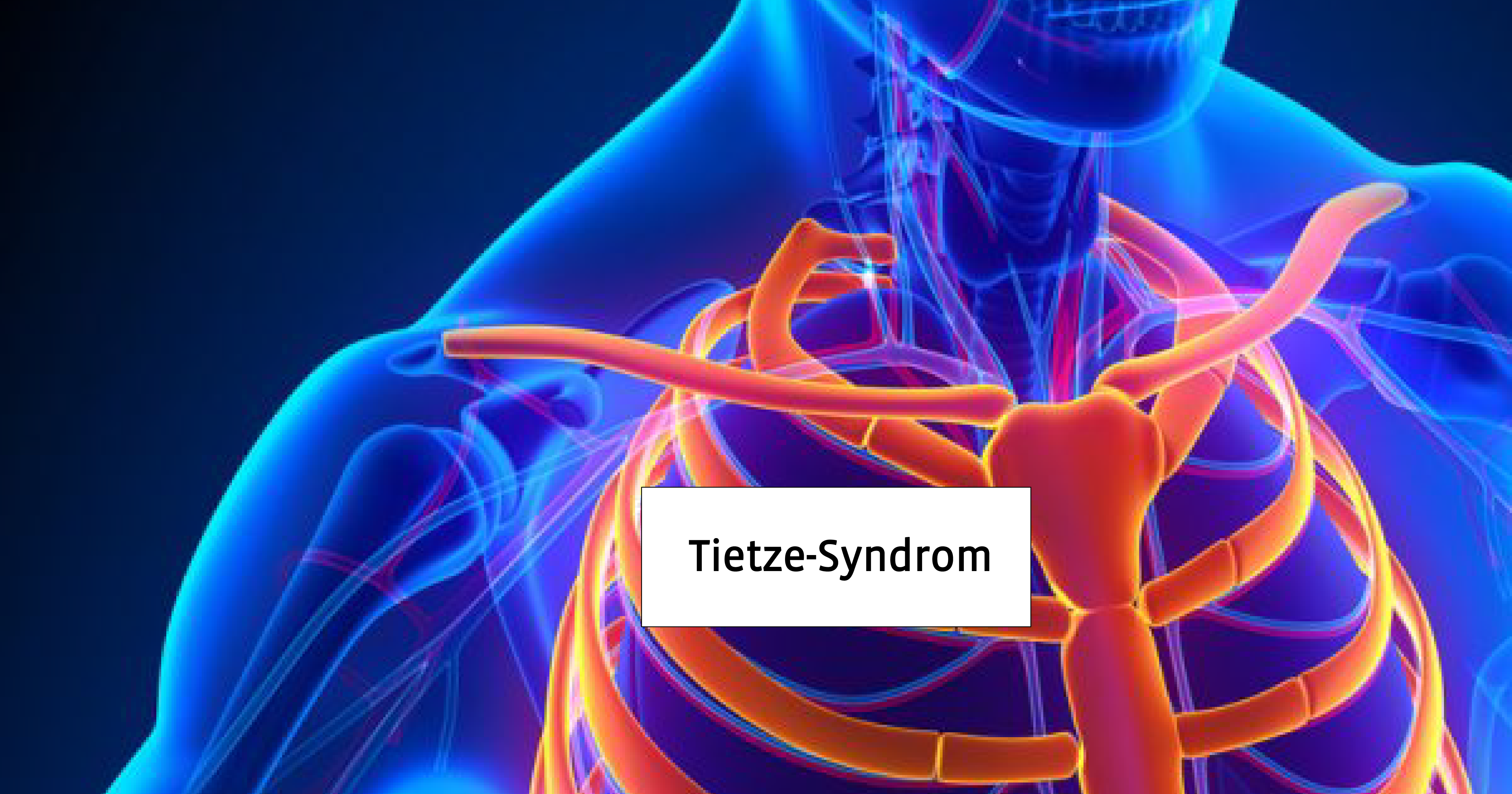
TietzeSyndrom Symptome Ursache Diagnose Behandlung und mehr
Tietze syndrome is a rare condition characterized by chest pain and swelling of a single costal cartilage that most commonly affects the second or third rib. The swelling differentiates it from costochondritis. It is typically seen in young individuals under the age of 40. Diagnosis of Tietze syndrome relies on the findings of the clinical.

Costochondritis (Tietze's Syndrome) Explained YouTube
Tietze syndrome, or Tietze's syndrome, is a rare inflammatory disorder. It affects the tissues that connect the ribs to the breastbone. Tietze's syndrome can cause a sharp, stabbing pain that feels worse when moving the arms or chest, taking a deep breath, coughing, or sneezing. Tietze's syndrome, or costochondral junction syndrome.

Syndroom van Tietze Symptomen, Diagnose, Behandeling, Oefeningen
Het syndroom van Tietze is een aandoening van het kraakbeen dat je ribben aan je borstbeen verbindt. Het kraakbeen van één of enkele ribben is ontstoken. Je borstbeen kan daarbij gezwollen zijn. Door de zwelling is bewegen, zuchten of hoesten vaak pijnlijk. Ook is je huid soms rood verkleurd op de pijnlijke plek (ken).

Tietze syndrome Tietze disease causes and therapy Diseases 2023
Tietze syndrome is a rare, benign condition that involves a painful swelling and tenderness of the cartilage around one or more of your upper ribs where they attach to your breastbone. It mostly.
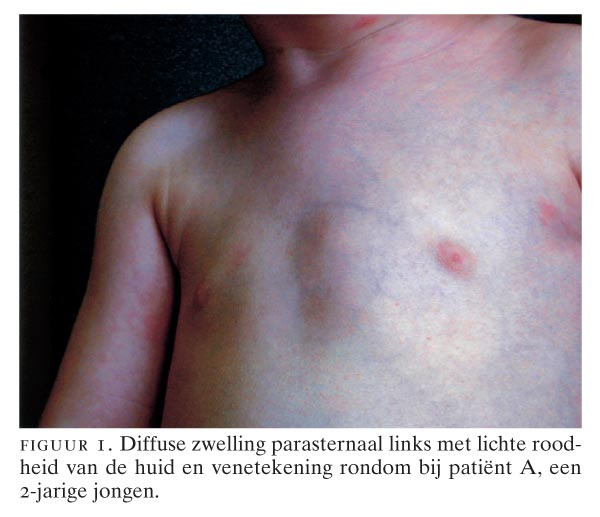
Het syndroom van Tietze bij een 2jarige jongen Nederlands Tijdschrift voor Geneeskunde
Tietz syndrome is a disorder characterized by profound hearing loss from birth, fair skin, and light-colored hair. The hearing loss in affected individuals is caused by abnormalities of the inner ear (sensorineural hearing loss) and is present from birth. Although people with Tietz syndrome are born with white hair and very pale skin, their.

Síndrome De Tietze, Síntomas, Causas, Diagnostico, Tratamiento.
Symptomen ziekte van Tietze. De belangrijkste klacht bij het syndroom van Tietze is pijn aan het borstbeen. Deze kan in hevigheid toenemen bij het diep inademen, zuchten, niezen of hoesten. Soms kan de pijn uitstralen naar de rug, nek, schouder en arm. Daarnaast kan er een benauwd en beklemmend gevoel in de borststreek en hartkloppingen ontstaan.
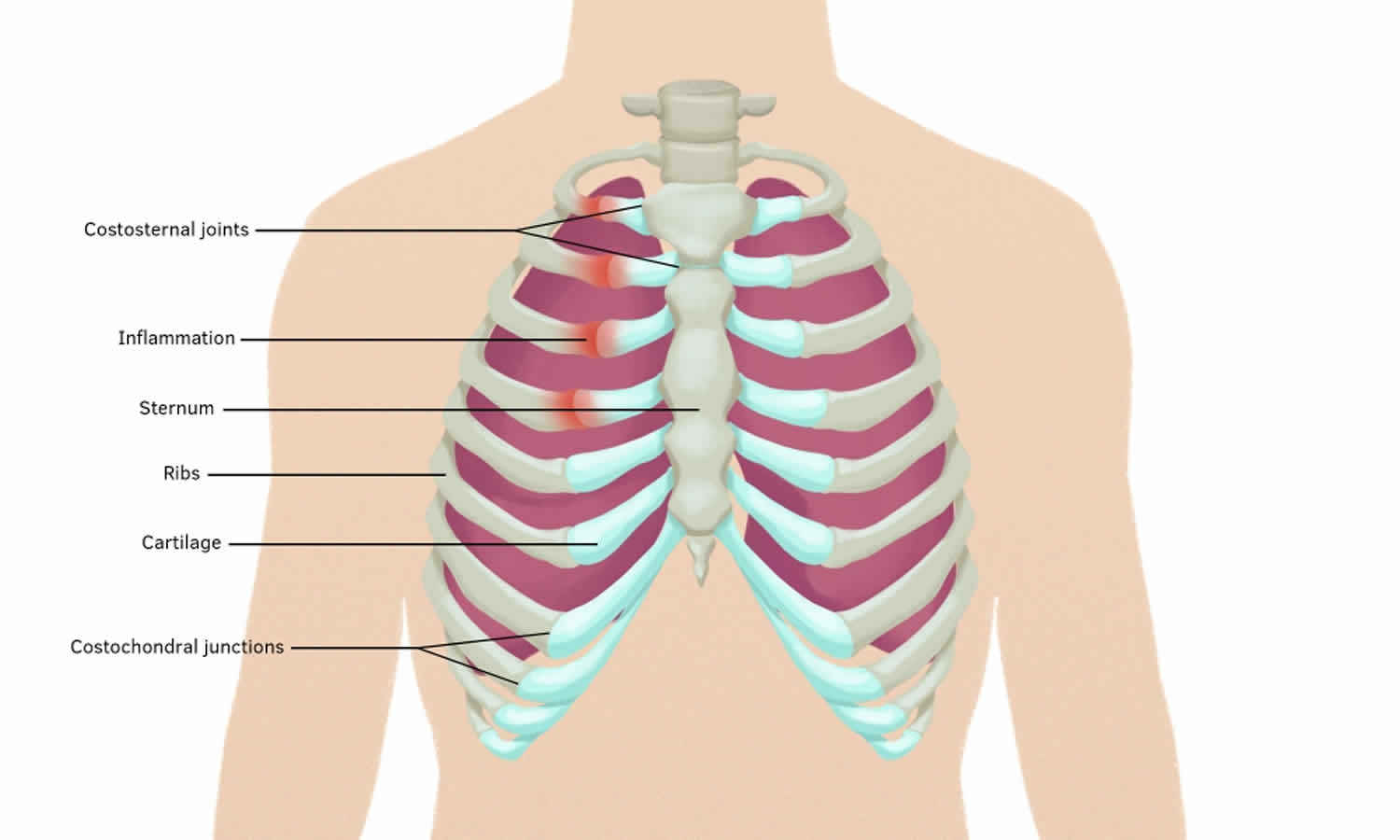
Tietze syndrome causes, signs, symptoms, diagnosis and treatment
Symptoms of Tietze syndrome. Symptoms of Tietze syndrome may include: Pain. Tenderness. Swelling. Redness or warmth. These symptoms most commonly affect the second or third upper ribs. It's often possible with Tietze Syndrome to feel a lump on the chest. The pain may further extend to the neck, shoulders, or upper arms. 2 3.

Costochondritis vs Tietze's Syndrome (Pain in Chest Region) Dr Mandell YouTube
Tietze syndrome is a rare inflammatory condition that involves inflammation of the cartilage between the ribs and sternum. The characteristic symptom is chest pain, which may radiate to the neck.

Tietze syndrom Lommelegen
While both costochondritis and Tietze syndrome feature symptoms such as localized chest pain and tenderness, Tietze syndrome also causes swelling over the ribs and cartilage near the breastbone (sternum). Signs and symptoms such as. redness, tenderness, and. warmth can also be present, but a localized swelling is the distinguishing finding.
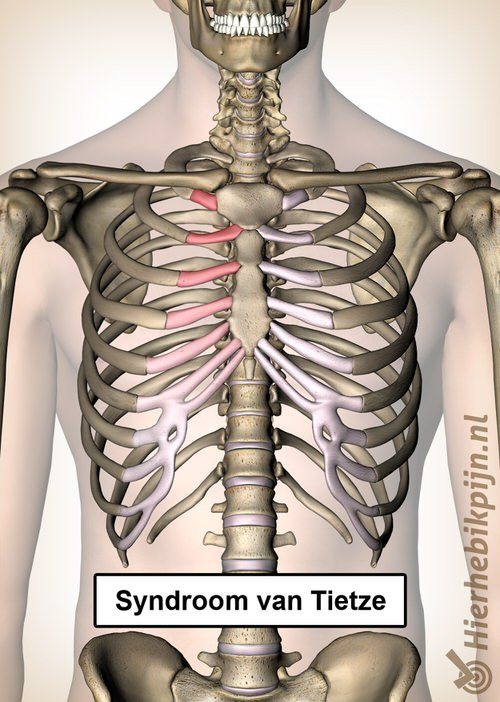
Syndroom van Tietze Oorzaak, symptomen & behandeling
About Tietze syndrome. Many rare diseases have limited information. Currently GARD aims to provide the following information for this disease: Population Estimate: This section is currently in development. Symptoms: This section is currently in development. Cause: GARD does not currently have information about the cause of this disease. Organizations: GARD is not currently aware of.
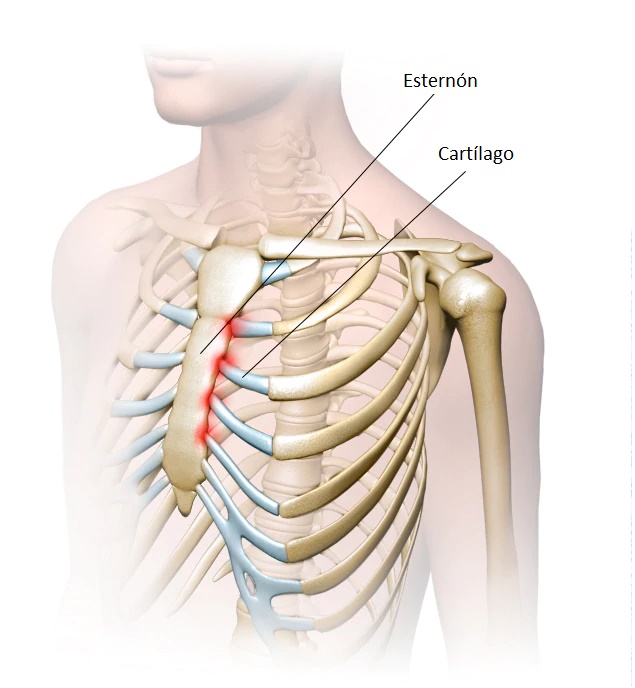
Síndrome de Tietze Qué es, causas, síntomas, tratamiento y consejos
Building the right medical team is an important early step in your diagnostic journey. Your medical team is the group of providers who are responsible for finding the right diagnosis and facilitating your care.
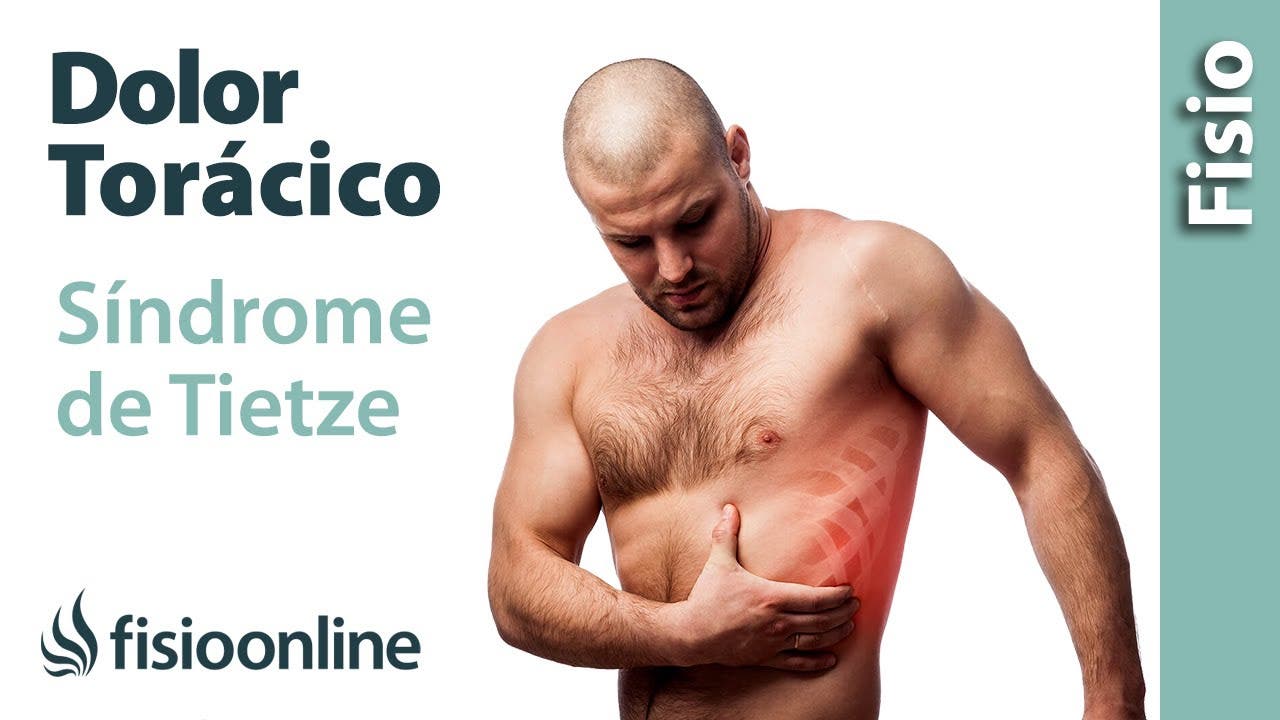
Síndrome de TIETZE. ¿Qué es y cuál es su tratamiento?
Tietze Syndrome - StatPearls - NCBI Bookshelf. Bethesda, MD 20894. Tietze syndrome (also called costochondral junction syndrome or chondropathia tuberosa), first described in 1921 by the German surgeon Alexander Tietze, is a rare and benign inflammatory condition characterized by chest pain and swelling at the costochondral junction. [1]

Syndroom van Tietze, pijn in je borst René van Maarsseveen
Tietze syndrome is a benign inflammation of one or more of the costal cartilages.It was first described in 1921 by German surgeon Alexander Tietze and was subsequently named after him. The condition is characterized by tenderness and painful swelling of the anterior (front) chest wall at the costochondral (rib to cartilage), sternocostal (cartilage to sternum), or sternoclavicular (clavicle to.
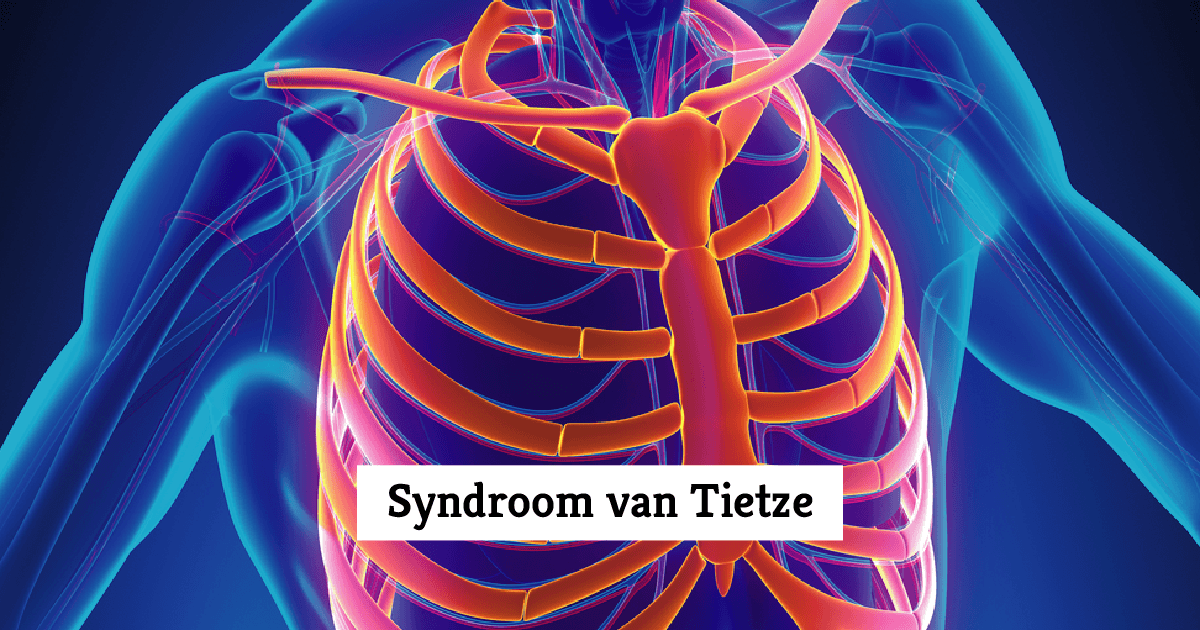
Syndroom Van Tietze Oefeningen Productkortingen
Tietze's syndrome is a benign, self-limiting arthropathy, without purulent character. The disease most often involves articulations: sternocostal, sternoclavicular, or costochondral joints. The characteristic symptoms are tenderness, pain and edema involving one of the aforementioned joints on one side. Diagnosis of Tietze's syndrome is.